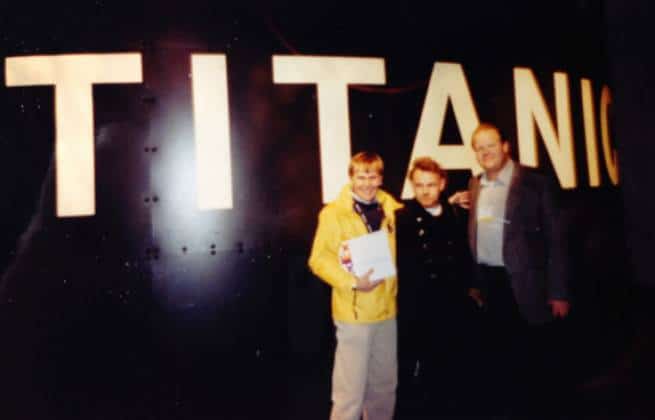In the early hours of April 15, 1912, one of the most tragic disasters in maritime history occurred off the Newfoundland coast. After hitting an iceberg, the R.M.S. Titanic, the ship that supposedly “even God couldn’t sink,” met a watery end on the last leg of its maiden voyage, breaking apart and sinking down to the ocean floor two miles below. The loss of life was catastrophic. Due to a shortage of lifeboats and a disorganized evacuation, 1,500 passengers died in those cold Atlantic waters, and many, though certainly not all, were passengers relegated to the third class. Ever since, the ship, its demise and the unnecessary loss of life has stood as a metaphor for technological hubris, an example of the disproportionate suffering of the marginalized social and economic classes, and a humbling reminder as to what can happen when overconfidence trumps good sense.
The world’s fascination with the Titanic has never waned, and for decades, organizations and individuals worked tirelessly, but fruitlessly, to locate the sunken ship’s coordinates in order to explore, recover and learn more about what went wrong on that fateful night. It wasn’t until 1985 that explorers finally located the ship’s exact resting point. Since then, organizations such as Titanic International Society, a New Jersey-based non-profit dedicated to preserving the history and artifacts of the Titanic, have contrived to recover and restore pieces of the ship and its contents for study, commemoration and historical insight.
In the late 1990s, the Titanic International Society contracted with Engineered Packaging Solutions (EPS) to develop custom cases for the safe transport of recovered artifacts. After consulting with society director George Tollach and society head curator Stephen Pennick, EPS provided custom cases for a variety of items, including a complete porthole from the side of the ship, the cherub at the end of the grand staircase, and many items from the engine room, including wrenches, lumps of coal and a throttle control.
Items of particular interest for which EPS developed protective cases were the steam whistles from the ship’s main smoke stack. After more than 85 years at the bottom of the sea, in 1999 these whistles were carefully resurrected, restored and transported within EPS custom cases to the Titanic Exhibit at St. Paul’s Union Depot in Minnesota, where they sounded again for a crowd of thousands.
While it’s true that transporting fragile artifacts from one of history’s most famous ships does not make up the bulk of our business, here at EPS, we love this story because it is indicative of the level of care and attention we put into every custom case we make. If we can customize packaging for some of the world’s most renowned historical artifacts, we can certainly take on any project a client brings our way. We’re proud to be a part of the Titanic recovery efforts and know that we were afforded this opportunity because of the care and capability that we bring to every project we take on.
If you thought this was interesting, check out some of our other posts and case studies. We do some fascinating stuff around here!
Life-Saving Drone Tech Is Transforming Custom Cases from a Great Idea into a Total Necessity


